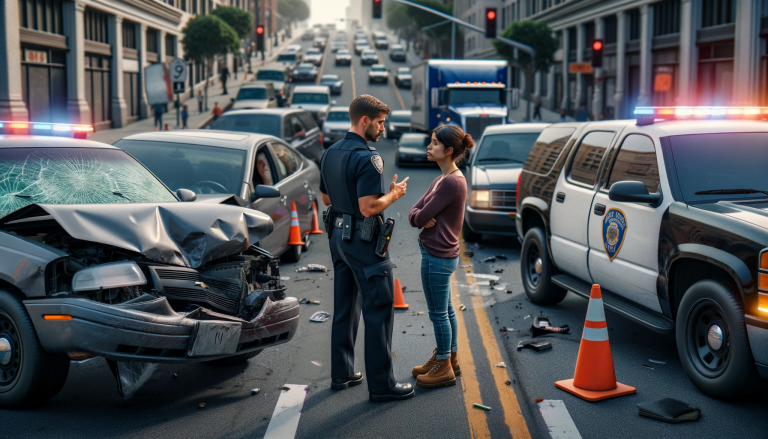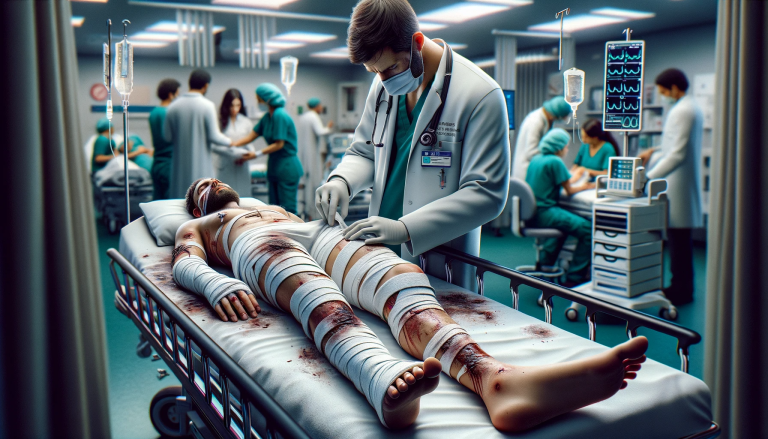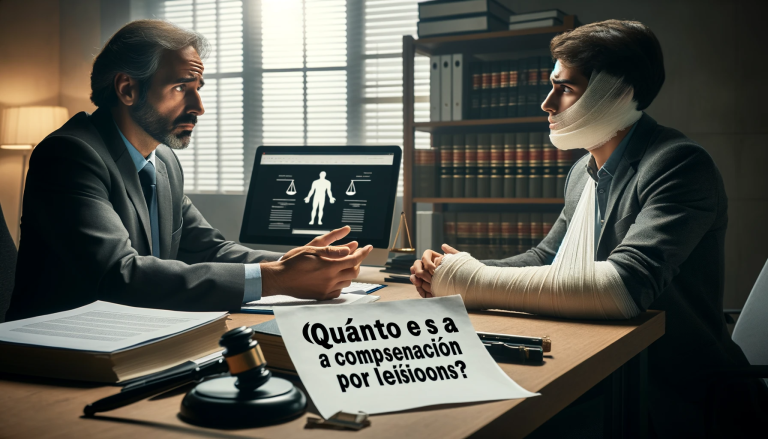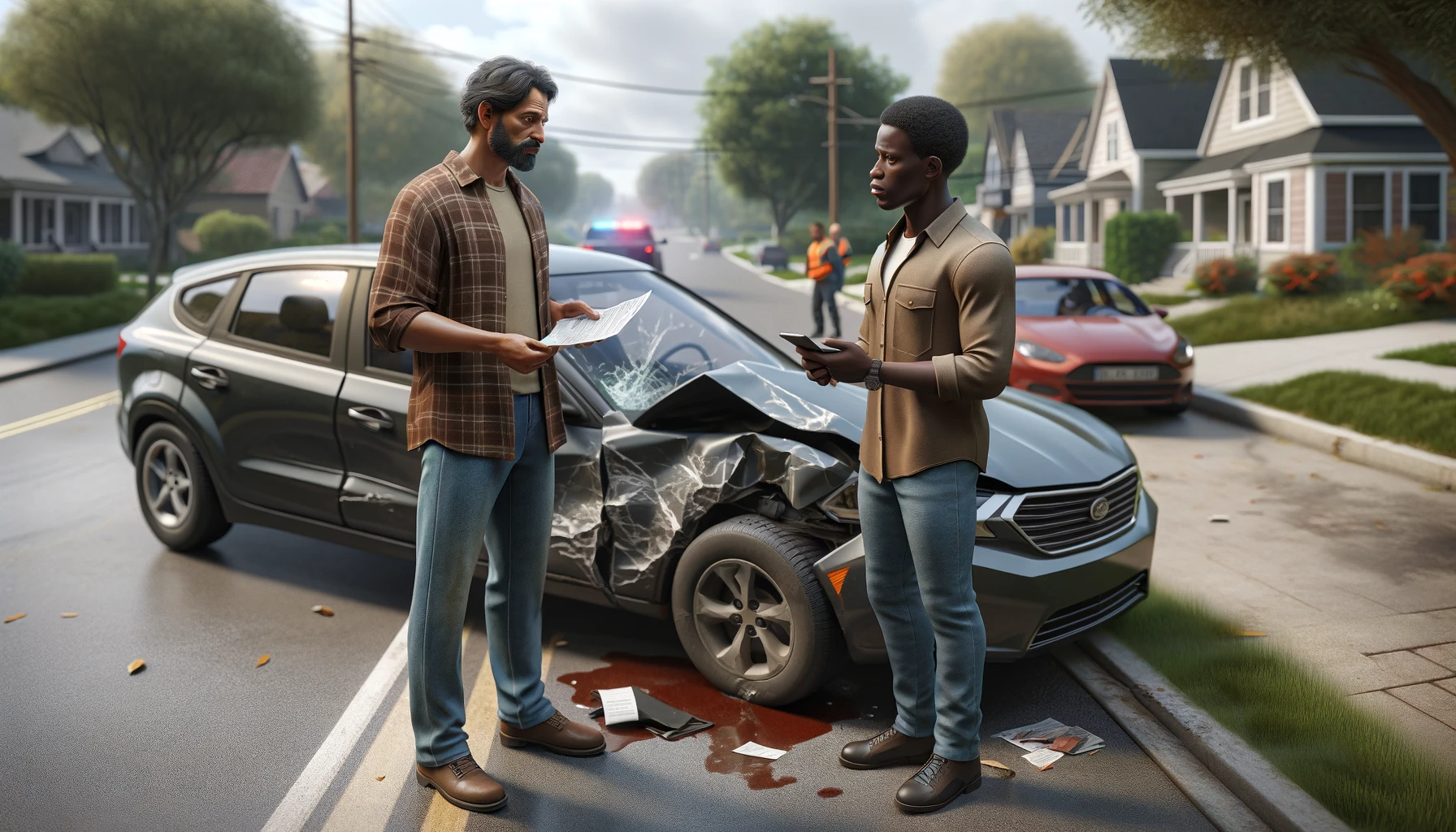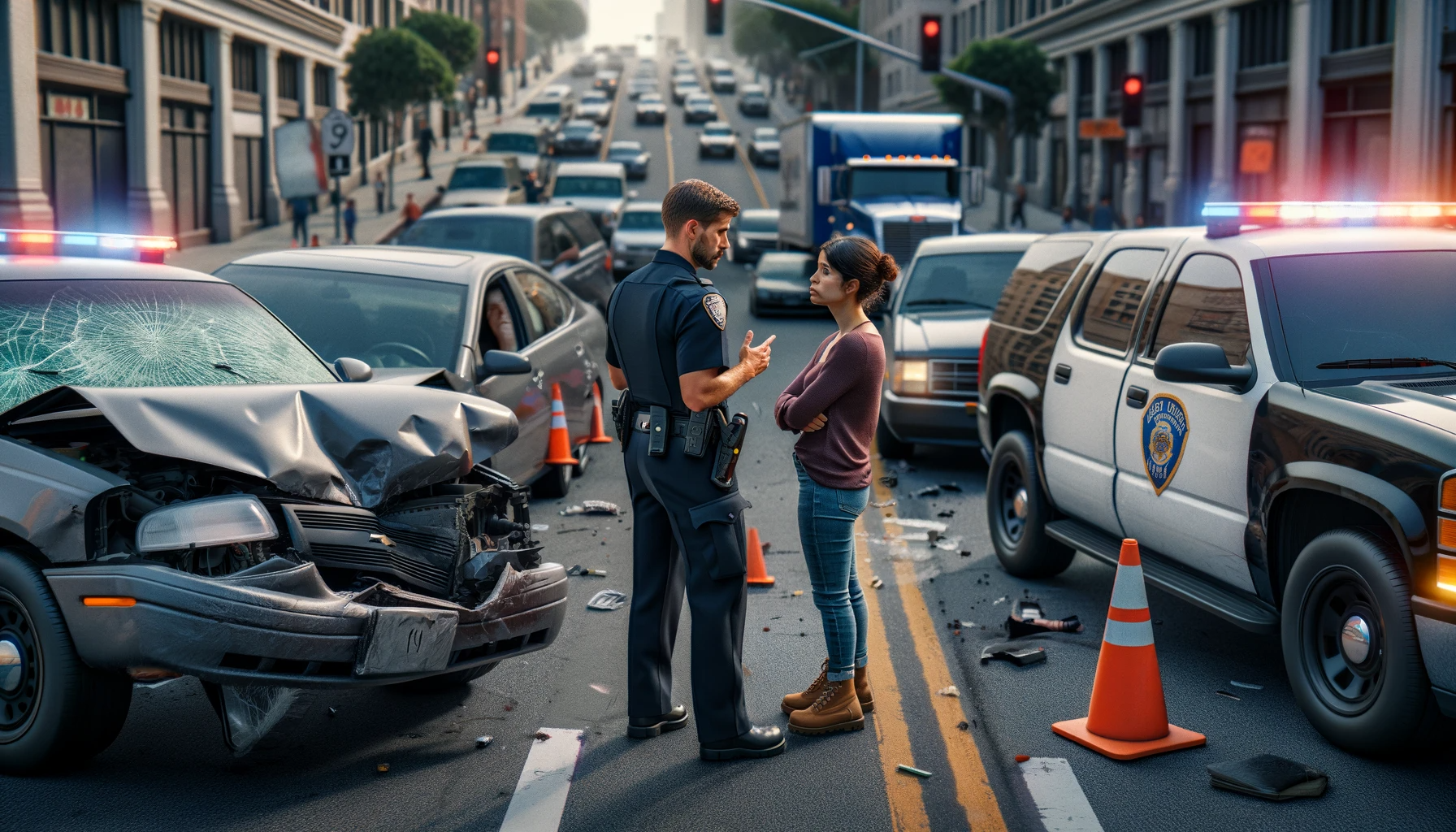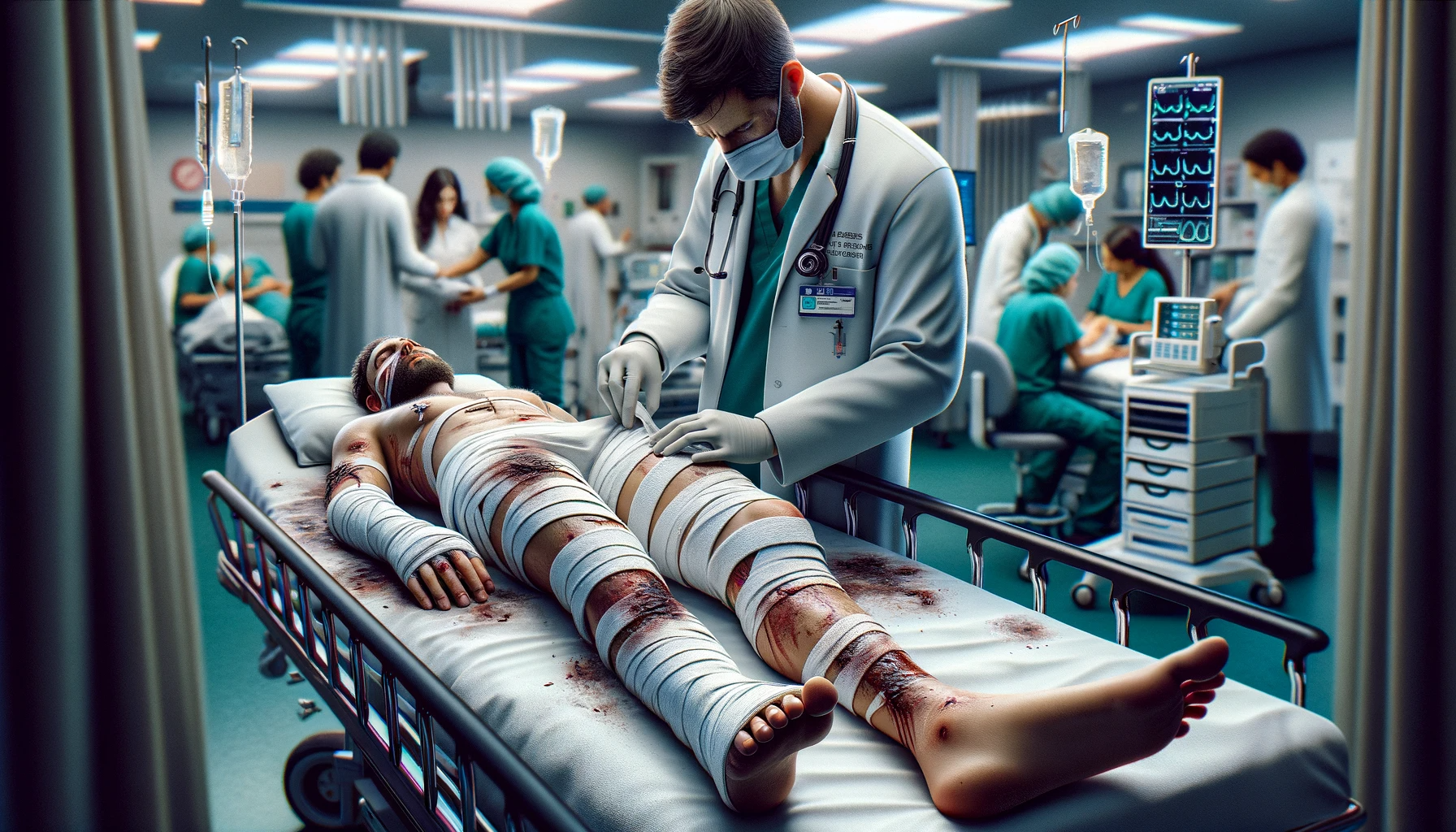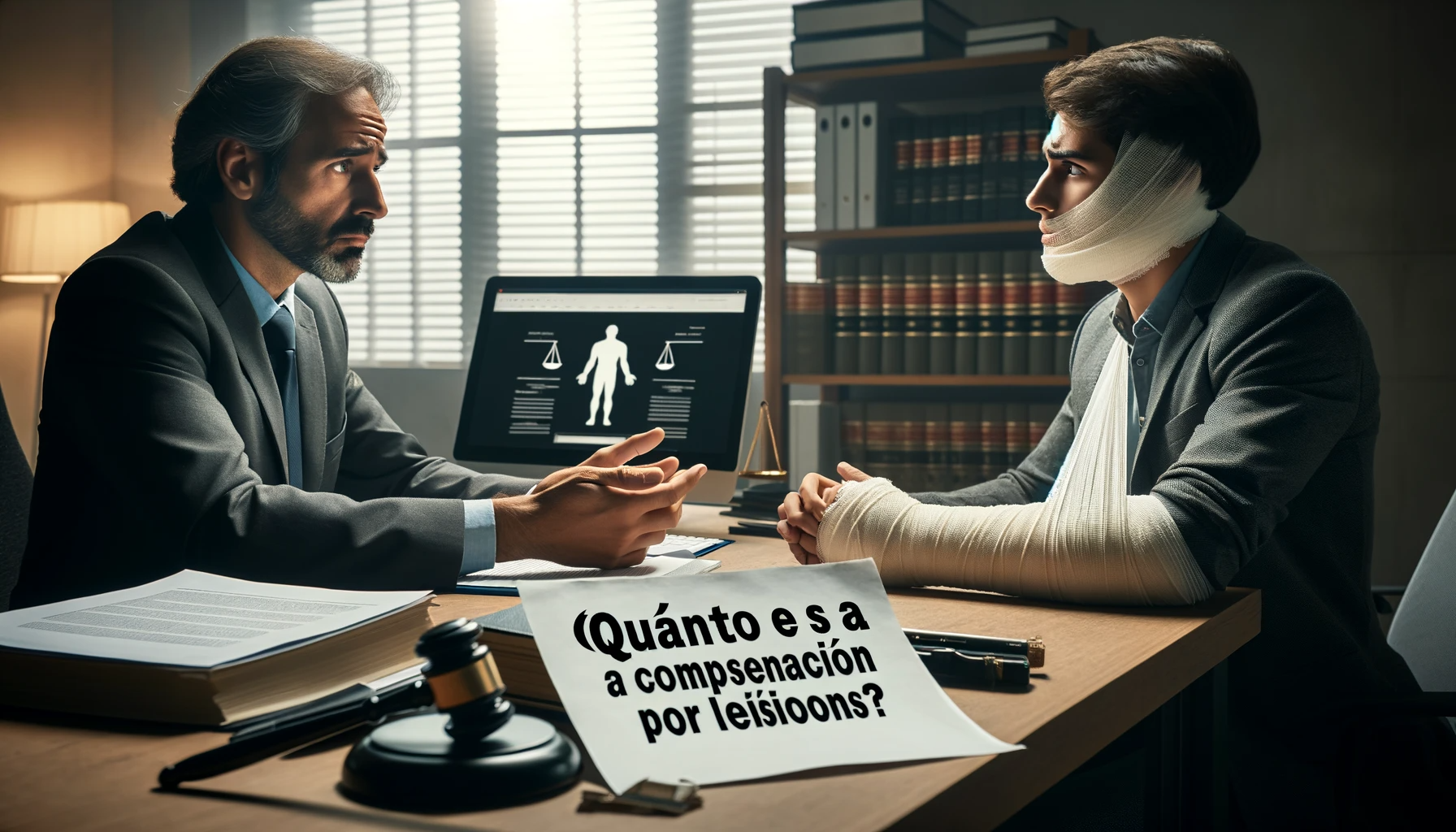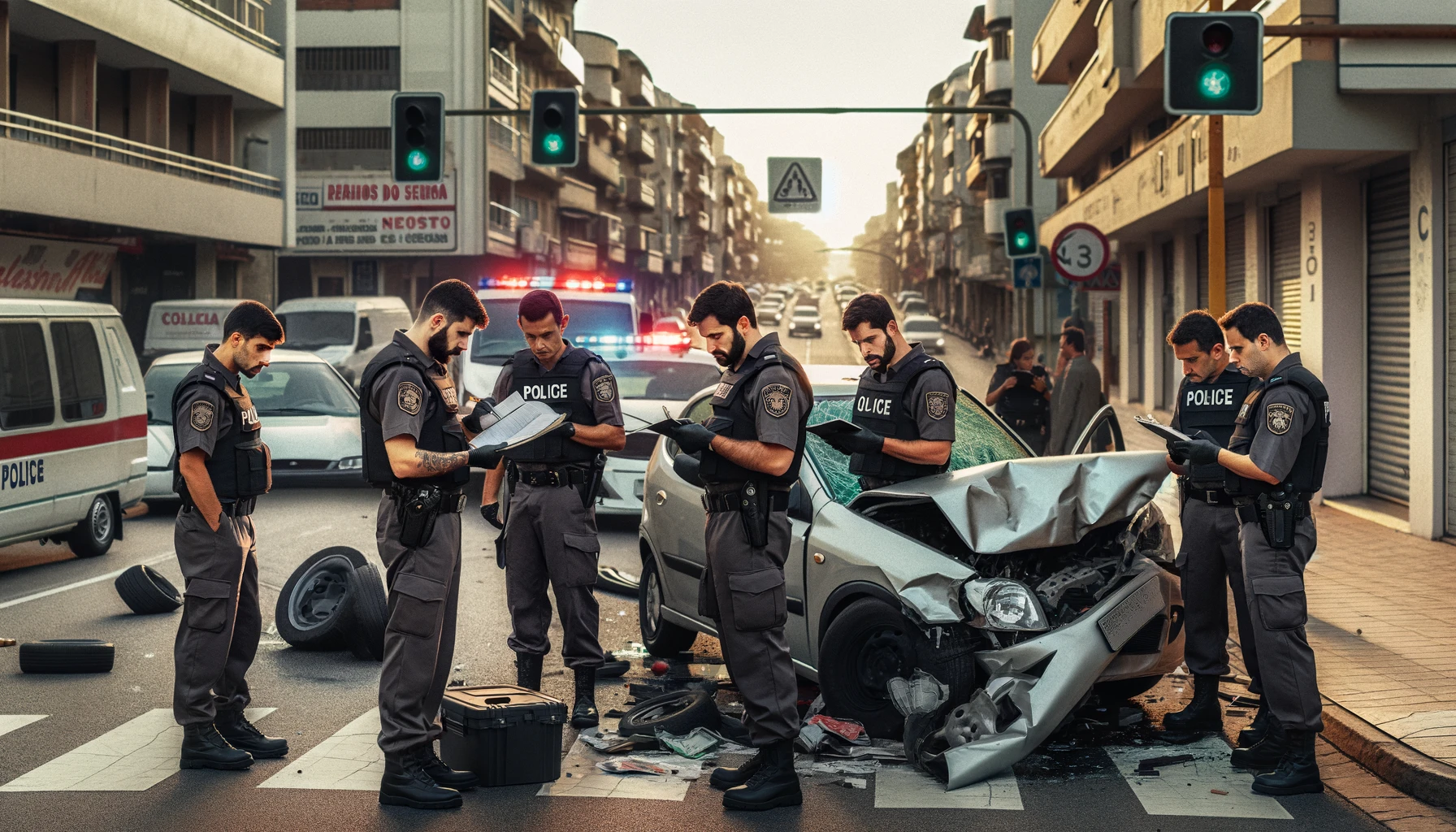Determining Responsibility in Different Types of Accidents
In the instance of
Car accidents, responsibility usually falls on the driver who was negligent or reckless. Negligence might involve failing to abide by traffic rules, speeding, or driving under the influence. A police report can often help in identifying the at-fault party. However, some situations like multi-car pile-ups may require more detailed investigation to determine who was truly at fault.
Slip and Fall Incidents
Slip-and-fall accidents typically occur on someone else's property. The property owner could be held liable if it's proven that they did not maintain a safe environment leading to the accident. However, if the injured party acted carelessly, they might partially or fully share the blame. For example, if a person ignores a wet floor sign and slips, he/she might be held partially responsible for the accident.
Determining Fault in Workplace Accidents
Workplace accidents can be tricky as multiple parties - the employee, employer, manufacturers of faulty equipment, etc., can be held accountable. Employers generally bear the responsibility unless it can be shown that they made all efforts to ensure a safe working environment and the accident occurred due to employee negligence.
Animal Attacks and Owners' Responsibility
When an animal attack occurs, the pet owner is typically held liable, especially if they knew about their pet’s violent tendencies. However, exceptions may apply if the victim provoked the animal or trespassed onto the owner's property.
Medical Malpractice Scenarios
In medical malpractice cases, healthcare providers maybe held accountable if their actions deviate from the standard of care expected in their profession, resulting in patient harm. However, liability can be shared if the patient didn't follow the doctor’s advice, leading to a poor health outcome.
Role of Law Enforcement in Accident Investigations
Initial Response and Scene Security
Law enforcement officials are usually among the first responders to accident scenes. They play a crucial role in securing the accident site, ensuring safety, and preventing further damage or injuries. Officers will typically set a secure perimeter, reroute traffic if necessary, and coordinate the arrival of other emergency services.
Evidence Gathering and Documentation
Another key function of law enforcement in accident investigations is the collection and preservation of evidence. Officers meticulously document the scene via photographs, sketches, and notes. They identify and record the locations of vehicle resting positions, skid marks, property damage, and any other relevant features. This visual and written documentation serves as critical evidence for determining what happened, who may be at fault, and potential legal implications.
Witness Interviews and Statements
Collecting eyewitness accounts is another important task undertaken by the police. They conduct initial interviews with those involved in the accident and any witnesses present during the incident. These statements can often shed light on the circumstances leading up to the accident and help establish a chronological timeline of events.
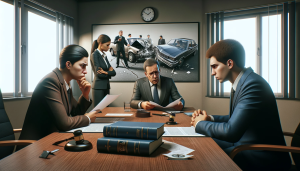
Completion of Official Reports
Post-accident, law enforcement officers are responsible for compiling all collected information into an official accident report. This document typically includes vital information like the date, time, and location of the accident, personal details of the involved parties, descriptions of vehicles, insurance details, and a narrative of events based on evidence and witness accounts.
Legal Proceedings and Court Testimony
Finally, law enforcement officers may also have the responsibility of presenting their findings in court. Their professional opinion, backed by substantial evidence gathered during the investigation, can significantly influence court proceedings related to the accident. They may also provide expert testimony regarding standard driving practices, local traffic laws, and their interpretation of how these were upheld or violated in the specific situation.
Understanding Legal Liability in Accidents
Concept of Legal Liability in Accidents
In the realm of law, legal liability refers to the accountability one holds when an accident occurs due to their actions or negligence. It means that a party is legally responsible for the consequences of the accident, be it property damage,
Personal injury, or death.
Establishing Fault in Accidents
Central to understanding legal liability in accidents is the concept of fault. In general terms, the party at fault is the one determined to have caused or contributed to the accident through negligence, carelessness or reckless behavior. This definition varies across jurisdictions and can be influenced by local laws and regulations.
The Role of Negligence
Negligence is often the major determining factor in assigning legal liability in accident cases. The law describes negligence as failing to exercise the level of care that a reasonable person would under the same circumstances. For example, if a driver fails to stop at a red light and this leads to an accident, they might be regarded as negligent and therefore held liable.
Strict Liability and Vicarious Liability
Two additional aspects of legal liability are strict liability and vicarious liability. Strict liability applies in cases where an activity is considered so risky that the person engaged in it may be held legally accountable for any harm it causes, regardless of their level of care. Vicarious liability, on the other hand, occurs when one party is held responsible for the actions or omissions of another, such as an employer being held liable for an employee's actions.
Sharing of Liability
In some instances, more than one party might share legal liability for an accident. This concept, often referred to as comparative or contributory negligence, acknowledges that multiple parties can contribute to the circumstances leading up to an accident. Legal liability may thus be divided proportionally according to each party's level of fault.
Effects of Insurance Policies on Accident Responsibility
Insurance Policies and Liability Determination
Insurance policies play a fundamental role in identifying who is responsible for an accident. When an accident occurs, the insurance companies of the involved parties examine the circumstances surrounding the incident. They assess elements such as the police report, damage to vehicles, and eyewitness statements to ascertain who was at fault. This process, known as subrogation, helps to determine which party's insurance should pay for the damages.
Effect on Claims and Payouts
The findings from the liability determination significantly affect how claims and payouts are processed. If the insured party is deemed at fault, their insurance policy will have to cover the damages incurred by the other party. Conversely, if the insured party is not at fault, the insurance company can reclaim the amount it paid out for repairs from the at-fault party's insurer.
Impact on Policy Premiums
How an accident impacts an individual's insurance policy premium largely depends on the terms of the policy and whether they were at fault. If the insured party is deemed responsible for the accident, it could lead to an increased premium at the policy renewal time. Some insurance providers offer accident forgiveness features to prevent this, although this typically applies only to the policyholder’s first at-fault accident.
Influence on No-Fault Insurance Policies
In the case of no-fault insurance policies, the decision on accident responsibility operates differently. Such policies are designed to pay for certain types of damage irrespective of who was at fault in the incident. However, the at-fault driver may face surcharges or increases in their premium. The details vary based on regional laws and the specific terms of the insurance contract.
The Role of Uninsured and Underinsured Motorist Coverage
Uninsured and underinsured motorist coverage also influence
Accident responsibility. If an insured party is involved in an accident with an uninsured or underinsured driver who is at fault, this protection allows the insured party to receive compensation from their own insurer. However, the insurance company may pursue the at-fault driver to recoup its losses.
The Role of Witnesses in Identifying Accident Responsibility
Importance of Witnesses in Accident Scenarios
Witnesses play a pivotal role in determining accident liability. Their testimony provides an impartial view of the events as they unfolded, which can help clarify confusing or disputed details. A witness is not involved directly in the accident and therefore their recollection of the incident is usually unbiased, giving their accounts significant weight when it comes to determining the responsible parties.
How Witnesses Contribute to Identifying Fault
The statements provided by witnesses are crucial in building a comprehensive picture of the accident. They may be able to provide key information, such as the state of the traffic lights, road conditions, the behavior of the drivers before the accident occurred, and other relevant factors. This can be particularly helpful in cases where those involved in the accident have contrasting versions of events, or memory of the accident is hazy due to shock or injury.
Credibility and Diverse Perspectives of Witnesses
Not all witnesses contribute equally to identifying accident responsibility. It’s essential to consider the credibility of each witness. Factors influencing credibility include the witness’s viewing angle, attention at the time of the accident, personal biases, and possible relation to anyone involved in an accident. A variety of witnesses from different perspectives also enhances the accuracy of the recollection of the incident.
Gathering Witness Information
Gathering contact information from witnesses at the scene is invaluable. Witnesses can easily disappear after the event and tracking them down later can be difficult. Having their information means that additional questions can be asked and their statement can be referenced throughout any ensuing investigations or legal proceedings.
Legal Influence of Witness Accounts
In court, witness testimonies can significantly influence the verdict. They assist judges and juries in understanding the circumstances better. In many cases, the strength of a witness's testimony can tip the balance in favor of one party or another, thereby helping to identify who was at fault in the accident.
How Fault is Determined in Vehicle Accidents
Understanding the Concept of Negligence
In vehicular accidents, the primary concept applied to determine fault is negligence. Negligence is defined as the failure to exercise an expected level of care and caution while operating a vehicle, which results in causing harm to others. Various factors can be classified as negligent behavior like distracted driving, not complying with traffic rules, or driving under the influence of alcohol or drugs.
The Role of Traffic Laws
Traffic laws play a significant role in discerning fault in
Car accidents. Authorities refer to these laws to determine if any driver involved in the accident has violated such rules. For instance, if a driver runs a red light and collides with another vehicle legally crossing the intersection, the driver who ignored the red signal would generally be deemed at fault.
Evaluating Evidence and Witnesses
Evidence and witness testimonies are paramount in determining who is responsible for the accident. These can include photos or videos from traffic cameras or witnesses, physical evidence such as skid marks or vehicle damage, and the drivers' statements. The more substantial and reliable the evidence, the more likely it will clearly distinguish the party at fault.
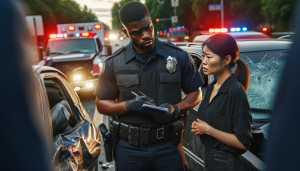
Insurance Companies' Involvement
Insurance companies also have a significant role to play in determining fault in vehicle accidents. Following an accident, each party's insurance company conducts its own investigation. They review the police reports, inspect the scene of the accident, interview witnesses, and evaluate the damage to the vehicles. They then apply the rule of comparative negligence to decide the percentage of fault each driver shares.
Impact of Local State Laws
Different states have different laws on how fault is determined. While some states follow 'At Fault' policy where the person causing the accident pays for damages, others follow the 'No-Fault' policy where each driver's insurance covers their expenses irrespective of who caused the accident. In some cases, the 'Comparative Negligence' law is applied, which assigns a percentage of fault to each driver involved in the accident. This allocates financial responsibility proportionately.
Considerations When Multiple Parties Are Involved in an Accident
Understanding Liability in Multi-Party Accidents
Accidents involving multiple parties often complicate the issue of assigning fault. In such scenarios, each driver's actions are analyzed, both before and during the accident, to establish their degree of responsibility. This is done by acquiring as much evidence from various sources such as police reports, witness statements, and traffic laws.
The Role of Comparative and Contributory Negligence
Different jurisdictions may apply different rules in multi-party accidents. The principles of 'Comparative Negligence' and 'Contributory Negligence' are commonly used. Comparative negligence allows a damaged party to recover some of their losses, even if they were partially at fault. However, the compensation is reduced by their percentage of fault. In contrast, contributory negligence bars any recovery if the damaged party was even slightly at fault.
Joint and Several Liability Regulations
The concept of joint and several liability can also come into play in multi-party accidents. Under this principle, each party found liable is individually responsible for the total damages. This means that if one party cannot afford to pay their share, other parties may be required to cover it.
Insurance Company Involvement
Insurance companies play a significant role in sorting out liability and compensations in multi-
Car accidents. They typically conduct their own investigations to determine fault based on the available evidence. The imposed liability often dictates who pays for what, impacting premium rates for those found at fault.
The Influence of Local Traffic Laws
Finally, local traffic laws also greatly influence the allocation of fault in a multi-party accident. Violation of these laws, such as speed limits or right-of-way rules, can contribute significantly towards establishing liability. Therefore, understanding your local traffic laws is essential when involved in such accidents.
Conclusion
Determining responsibility for an accident can be complex and depends on various factors such as the specific circumstances of the accident, applicable laws, and any evidence available. It often requires a thorough investigation by authorities or legal professionals to establish liability.
Look for an attorney who has the right legal resources for your legal needs.
Contact us here on the
Warmuth Law website or through our hotline 888-517-9888.
Frequently Asked Questions (FAQ's)
1. How is responsibility for an accident determined?
Responsibility for an accident is determined based on factors such as the actions of each party involved, relevant traffic laws, and any available evidence such as witness statements, photos, and video footage. A thorough investigation may be conducted by authorities or legal professionals to establish liability.
2. Can more than one party be responsible for an accident?
Yes, in some cases, more than one party may be found responsible for an accident. For example, if both drivers involved in a
Car accident were negligent, they may both share responsibility for the collision.
3. What if I am partially responsible for an accident?
If you are partially responsible for an accident, your compensation for damages may be reduced based on your percentage of fault. This is known as comparative negligence or contributory negligence, depending on the state's laws.
4. How can I prove someone else is responsible for my accident?
To prove someone else is responsible for your accident, you may need to gather evidence such as witness statements, photos or videos of the accident scene, and any relevant documents like police reports or medical records. You may also need to consult with legal professionals to understand your options.
5. What should I do if I'm unsure who is responsible for an accident?
If you're unsure who is responsible for an accident, it's important to avoid admitting fault and to gather as much evidence as possible. You may also want to consult with legal professionals who can help you understand your rights and options for seeking compensation.




